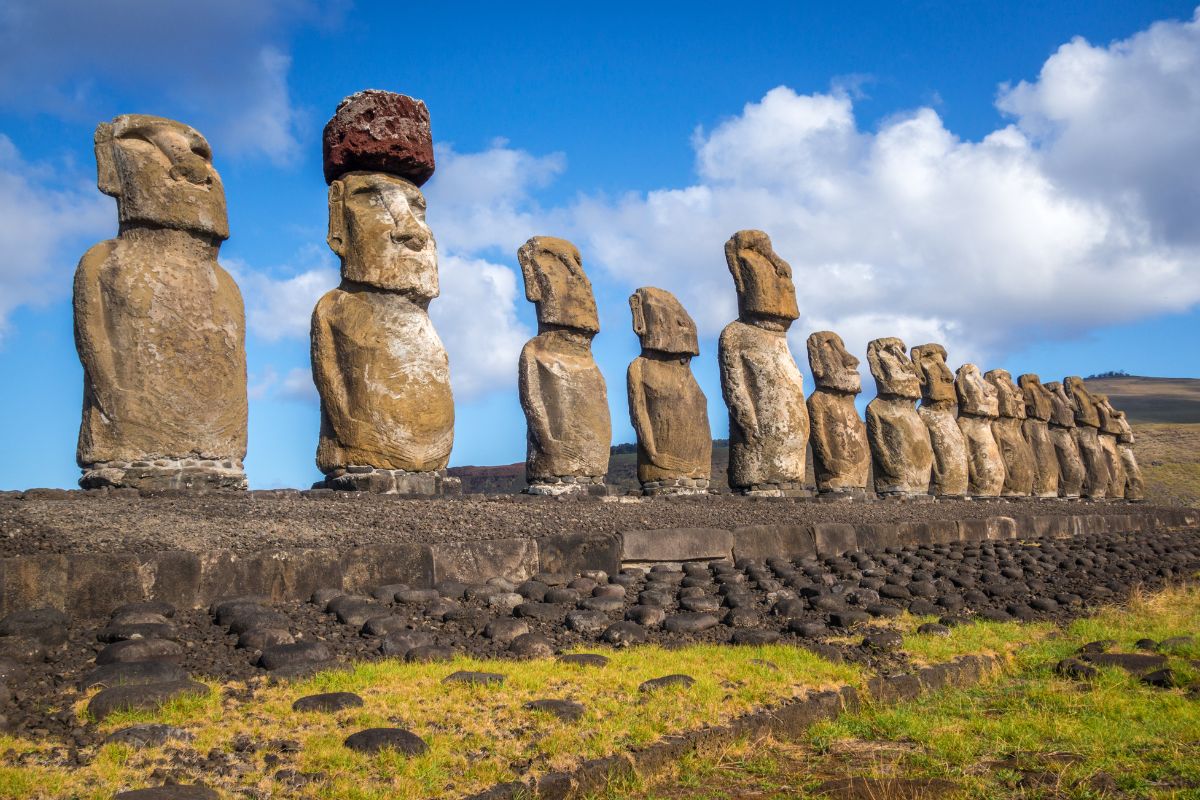
Easter Island, known as Rapa Nui by its native people, is one of the most remote inhabited islands on Earth. Located in the southeastern Pacific Ocean, it’s famous for its mysterious Moai statues. These massive stone figures, carved by the Rapa Nui people, have puzzled historians and archaeologists for centuries. How did they move these colossal statues? What do they represent? Beyond the statues, Easter Island boasts a rich history, unique culture, and stunning landscapes. From its volcanic origins to its intriguing petroglyphs, there’s much to learn about this isolated yet fascinating island. Ready to uncover some surprising facts about Easter Island? Let’s dive in!
The Mysterious Moai Statues
Easter Island, known as Rapa Nui, is famous for its giant stone statues called Moai. These statues have fascinated people for centuries.
- Moai Statues: There are around 900 Moai statues on Easter Island. Each one represents an important ancestor.
- Height and Weight: The tallest Moai statue is about 33 feet tall and weighs around 82 tons.
- Carving: These statues were carved from volcanic tuff, a soft rock found on the island.
- Transportation: The Rapa Nui people moved these massive statues using a combination of ropes, logs, and sheer manpower.
- Eyes: Originally, the Moai had eyes made of coral and red stone pupils, which were added after the statues were erected.
The Rapa Nui People
The indigenous people of Easter Island, known as the Rapa Nui, have a rich culture and history.
- Settlement: The Rapa Nui people are believed to have settled on the island around 1200 AD.
- Language: They speak Rapa Nui, a Polynesian language, and also Spanish.
- Tattooing: Tattooing was an important cultural practice, with designs often representing family lineage and social status.
- Birdman Cult: The Birdman Cult was a significant part of their culture, involving an annual competition to retrieve the first sooty tern egg from a nearby islet.
- Agriculture: The Rapa Nui practiced advanced agriculture, using stone gardens called "manavai" to protect crops from wind and conserve moisture.
Geography and Environment
Easter Island is one of the most remote inhabited islands in the world, with unique geographical features.
- Location: It is located in the southeastern Pacific Ocean, about 2,300 miles from Chile's coast.
- Size: The island covers roughly 63 square miles, making it relatively small.
- Volcanoes: Easter Island has three extinct volcanoes: Terevaka, Poike, and Rano Kau.
- Climate: The island has a subtropical climate, with mild temperatures year-round.
- Deforestation: The island was once covered in palm trees, but extensive deforestation occurred due to human activity and the introduction of the Polynesian rat.
Archaeological Discoveries
Easter Island is a treasure trove of archaeological finds that provide insight into its past.
- Ahu Platforms: The Moai statues stand on stone platforms called "ahu," which also served as tombs for important individuals.
- Petroglyphs: Over 4,000 petroglyphs have been found on the island, depicting various symbols and figures.
- Caves: Many caves on the island were used as dwellings and places of refuge.
- Tools: Stone tools used for carving the Moai have been discovered, providing clues about the techniques used.
- Orongo Village: This ceremonial village on the edge of Rano Kau crater was the center of the Birdman Cult activities.
Modern-Day Easter Island
Today, Easter Island is a popular tourist destination with a unique blend of ancient culture and modern life.
- Population: Around 7,750 people live on the island, with most residing in the main town of Hanga Roa.
- Tourism: Tourism is the island's main industry, attracting visitors from around the world to see the Moai and other archaeological sites.
- UNESCO World Heritage Site: Easter Island was designated a UNESCO World Heritage Site in 1995, recognizing its cultural and historical significance.
- Conservation Efforts: Efforts are ongoing to preserve the island's archaeological sites and natural environment.
- Festivals: The Tapati Rapa Nui festival, held every February, celebrates the island's culture with traditional music, dance, and competitions.
Easter Island's Mysteries Unveiled
Easter Island, with its moai statues and rich history, continues to fascinate. The island's remote location and the Rapa Nui culture offer a glimpse into a unique world. From the mysterious construction of the moai to the island's deforestation, each fact adds a layer to its enigmatic story. The collapse of the Rapa Nui society serves as a cautionary tale about environmental impact and resource management. Despite its small size, Easter Island's cultural significance is immense, drawing researchers and tourists alike. Whether you're intrigued by the ancient engineering feats or the cultural practices of the Rapa Nui, Easter Island remains a captivating subject. Its lessons and mysteries continue to inspire curiosity and respect. So, next time you think of Easter Island, remember it's more than just statues; it's a testament to human ingenuity and resilience.
Was this page helpful?
Our commitment to delivering trustworthy and engaging content is at the heart of what we do. Each fact on our site is contributed by real users like you, bringing a wealth of diverse insights and information. To ensure the highest standards of accuracy and reliability, our dedicated editors meticulously review each submission. This process guarantees that the facts we share are not only fascinating but also credible. Trust in our commitment to quality and authenticity as you explore and learn with us.
